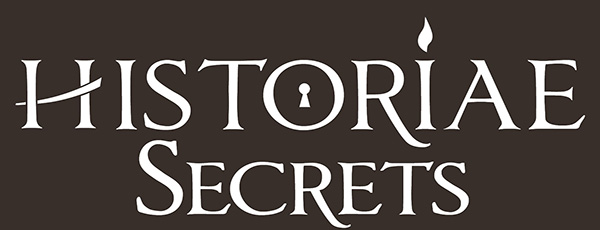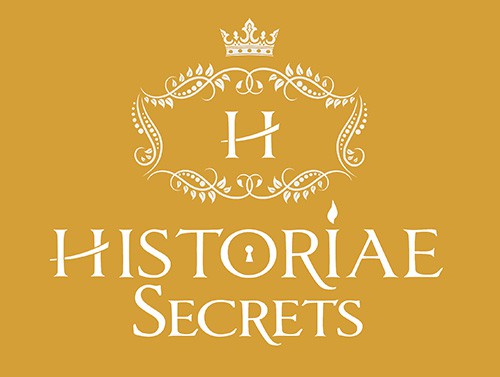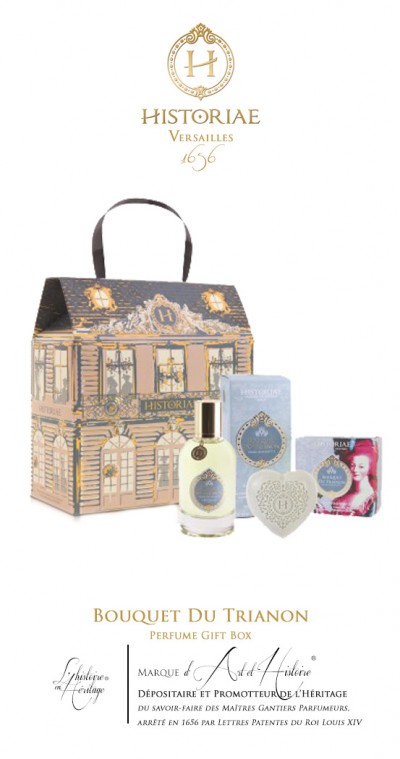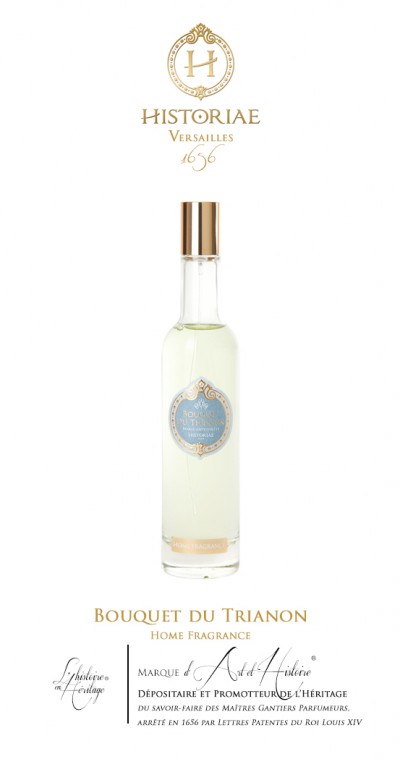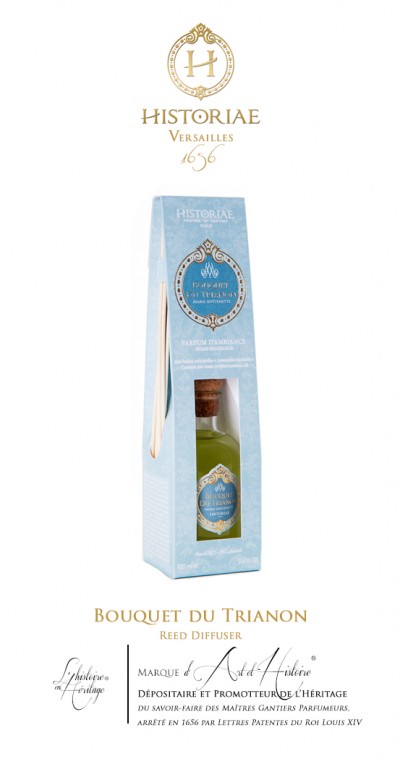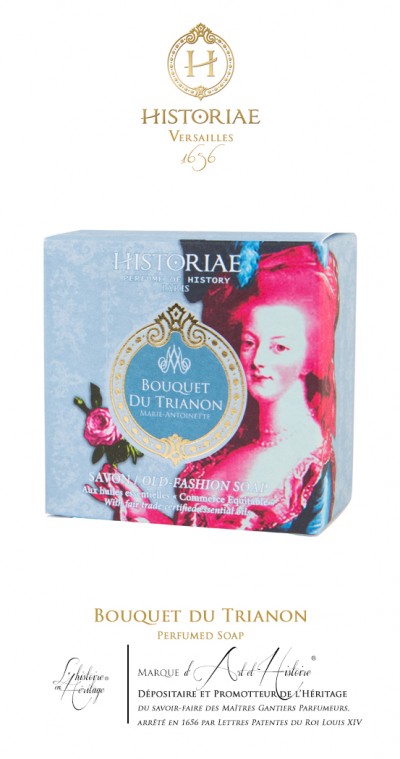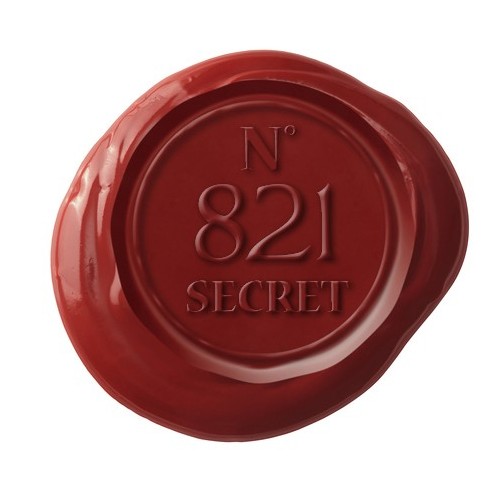
N° 821
The Magic of the Trianon Bouquet
On 15 August 1774, the night of Queen Marie-Antoinette’s party, Louis XVI gave his wife a marvellous present: ‘You like flowers, and so I have a bouquet to give you - the Little Trianon.’
Unlike the more classic show-gardens, which were very ordered, designed and scaled, a space for the owner to show his power, this garden, which seemed abandoned...
On 15 August 1774, the night of Queen Marie-Antoinette’s party, Louis XVI gave his wife a marvellous present: ‘You like flowers, and so I have a bouquet to give you - the Little Trianon.’
Unlike the more classic show-gardens, which were very ordered, designed and scaled, a space for the owner to show his power, this garden, which seemed abandoned, wild and romantic, astonished her and gave her a refuge where she could give free rein to her sensibility.
Marie-Antoinette sought to keep the magic and sensuality of the aromas of the Trianon bouquet with her forever.
The Trianon Bouquet or the Art of Sublimation
The perfumer Jean Louis Fargeon seized the opportunity and proposed to the Queen that he distil the flowers to obtain their essence, which the Queen would then be able to keep with her forever. He created numerous perfumes from roses, violets, carnations and the famous tuberose. The perfume Trianon, in which he used the intoxicating flower, together with essences of orange blossom, lavender, essential oils of citron and bergamot orange, galbanum, iris, violet, jasmin, lily, vanilla, cedar and sandalwood, amber, musc and a dash of benzoin, is one of his masterworks.
From the Flowers of the Little Trianon to the Perfumery of Art
From the Middle Ages to the nineteenth century, aromatic plants were cultivated to make therapeutic substances, which would constitute the essentials of materia medica. Perfume was used to protect, to nurse, to comfort, to vitalize. Odour was, in effect, the soul of medicine. Doctors of the time were so certain of this that shortly after the Revo
lution, Fourcroy, a member of the Royal Society of Medicine and Professor of Chemistry in the King’s Garden, created a classification system for medicines based on their scent.In the eighteenth century, distillation apparatus improved, tastes were evolving and perfumery took off once more. In keeping with the aristocratic mentality, wherein sensualist philosophies, sophisticated parties and refined tables triumphed, perfumery sought above all to privilege perfume’s finesse, to the detriment of its medicinal properties.
Perfumery thus began to move away from the world of medicine to establish itself firmly in the world of creative art. New scents appeared and replaced the heavy animal musks previously used. Perfumes became real creations, as with ‘quintessences’ and ‘spirits’, composed from the most refined and subtle of essences.
Perfume began to develop into a fashion accessory and was no longer used for protection or for masking body odour. New perfumers sought to appeal to the fit and healthy, not to invalids. They created perfumes like artists.
And with these perfume-creations emerged an artistic elan for flasks, concerning the material they were made from and their forms and decorations in equal measure. A charming squirrel clinging to an oak branch and nibbling a fruit, or a chaffinch with orange plumage perched on a bed of leaves, began to adorn these beautiful flasks: flasks belonging to both Art and History, which contained the Queen’s favourite perfume, to be found with her always on her strolls in the country.
Bibliography
Annick le GUERER « quand le parfum portait remède » Le Garde Temps, 2009
Produits associés au Secret "La Magie des Bouquets du Trianon"
-
Bouquet du Trianon - Perfume Gift Box Bouquet du Trianon - Perfume Gift Box
Reinterpreted Perfumes Of History Versailles, 15 août 1774 Gift box Castle with handle (20x18x9cm) contains perfumed soap Bouquet du Trianon 100g and Eau de Parfum spray large Bouquet du Trianon. Reinterpreted Perfumes Of History Versailles, 15 août 1774 Gift box Castle with handle (20x18x9cm) contains perfumed...
-
19,00€
Bouquet du Trianon - Home Fragrance Bouquet du Trianon - Home Fragrance
reinterpreted Scent of History Versailles, August 15th 1774 Bouquet du Trianon is an original fragrance made of a unique blend of essential oils that Marie-Antoinette was particularly fond of, especially the tuberose that fascinated her. Fair trade essential oils based, Bio Alcool. 100ml Spray. reinterpreted Scent of History Versailles, August 15th 1774 Bouquet du Trianon is an original fragrance made of a...
Not available -
Bouquet du Trianon - Reed Diffuser (Sticks) Bouquet du Trianon - Reed Diffuser (Sticks)
reinterpreted Scent of History Versailles, August 15th 1774 Bouquet du Trianon is an original fragrance made of a unique blend of essential oils that Marie-Antoinette was particularly fond of, especially the tuberose that fascinated her. Reed Diffuser, fair trade essential oils based, Bio Alcool with no glycol ether. 100ml perfumed bottle. reinterpreted Scent of History Versailles, August 15th 1774 Bouquet du Trianon is an original fragrance made of a...
-
Bouquet du Trianon - Perfumed Soap Bouquet du Trianon - Perfumed Soap
reinterpreted Scent of History Versailles, August 15th 1774 Bouquet du Trianon is an original fragrance made of a unique blend of essential oils that Marie-Antoinette was particularly fond of, especially the tuberose that fascinated her. Perfumed Soap 100g coconut butter and white clay based. reinterpreted Scent of History Versailles, August 15th 1774 Bouquet du Trianon is an original fragrance made of a...
-
Bouquet du Trianon - Eau de Toilette Bouquet du Trianon - Eau de Toilette
Reinterpreted Perfume Of History Versailles, 15th of August 1774 Art and History's perfume, 'Trianon's bouquet', is a perfume whose fragrances capture the very essence of Queen Marie Antoinette's refinement, which expressed itself in several domains in the Arts, Beauty and Fashion, and most notably in her taste for light and floral perfumes. Reinterpreted Perfume Of History Versailles, 15th of August 1774 Art and History's perfume, 'Trianon's bouquet', is...
-
25,00€
Bouquet du Trianon - Scented Candle Bouquet du Trianon - Scented Candle
reinterpreted Scent of History Versailles, August 15th 1774 Bouquet du Trianon is an original fragrance made of a unique blend of essential oils that Marie-Antoinette was particularly fond of, especially the tuberose that fascinated her. reinterpreted Scent of History Versailles, August 15th 1774 Bouquet du Trianon is an original fragrance made of a...
Chercher par thème
-
HUNT FOR Replicas and Objects of History
-
The "Historical Figures" Collection
-
Objects of History of Great Writers
- Objects and Products of History of Honoré de BALZAC
- Objects of History of MARCEL PROUST
- Objects and Products of History of ALEXANDRE DUMAS PÈRE
- Objects and Products of History of ARTHUR RIMBAUD
- Objects and Products of History of VICTOR HUGO
- Objects and Products of History of GUY DE MAUPASSANT
- Objects and Products of History of OSCAR WILDE
- Objects and Products of History of CHARLES BAUDELAIRE
- Objects and Products of History of JULES VERNE
- Objects and Products of History of GUSTAVE FLAUBERT
- Objets et Produits d'Histoire de JEAN COCTEAU
- Objets et Produits d'Histoire de CHAROTTE BRONTE
- Objets et Produits d'Histoire de LEWIS CAROLL
- Objects and Products of History of MOLIERE
-
Objects of History of Great Painters
- Objects and Products of History of ELISABETH VIGÉE LEBRUN
- Objects and Products of History of FRANÇOIS GÉRARD
- Objects and Products of History of CLAUDE MONET
- Objects and Products of History of HECTOR VIGER
- Objects and Products of History of MARTIN VAN MEYTENS
- Objects and Products of History of FRANZ XAVIER WINTERHALTER
- Objects and Products of History of VINCENT VAN GOGH
- Objects of History of Princes, Kings & Emperors
-
Objects of History of Princesses, Queens & Empresses
- Objects and Products of History of MARIE-ANTOINETTE
- Objects and Products of History of JOSÉPHINE DE BEAUHARNAIS
- Objects and Products of History of EMPRESS EUGÉNIE
- Objects and Products of History of ELISE DE BEAUHARNAIS
- Objects and Products of History of LAETITIA BONAPARTE
- Objects and Products of History of HORTENSE DE BEAUHARNAIS
- Objects and Products of History of PAULINE BONAPARTE
- Objects and Products of History of the COUNTESS OF PRESLE
- Objects and Products of History of Marquise of CAUMONT
- Objects and Products of History of Madame Elisabeth
- Objects and Products of History of ELEONORE VERGEOT
- Objects of History of Great Photographers
- Objects of History of Great Perfumers
- Objects of History of Immortal Artists
- Objects of History of Great Gastronomes
- Objects of History of Great Scientists
- Objects of History of Great Gardeners
-
Objects of History of Great Writers
- The "Arts and Crafts of History" Collection
- The "Famous Houses and Historical Shops" Collection
- The "Ancient and Always Existing Brands" Collection
-
The "Historical Figures" Collection
-
HUNT AFTER Hidden Secrets of History
-
Secrets of GREAT WRITERS
- Secrets of Honoré de Balzac
- Secrets of Marcel Proust
- Secrets of Alexandre Dumas Père
- Secrets of Arthur Rimbaud
- Secrets of Vicotr Hugo
- Secrets of Guy de Maupassant
- Secrets of Oscar Wilde
- Secrets of Charles Baudelaire
- Secrets of Jules Vernes
- Secrets of Jean Cocteau
- Secrets of Gustave Flaubert
- Secrets of Lewis Caroll
- Secrets of Charlotte Brontë
- Secrets of Molière
- Secrets of GREAT PAINTERS
- Secrets of PRINCES, KINGS & EMPERORS
-
Secrets of PRINCESSES, QUEENS & EMPRESSES
- Secrets of Marie-Antoinette
- Secrets of Joséphine de Beauharnais
- Secrets of Empress Eugénie
- Secrets of Elise de Beauharnais
- Secrets of Laetitia Bonaparte
- Secrets of Hortense de Beauharnais
- Secrets of Pauline Bonaparte
- Secrets of Eléonore de Vergeot
- Secrets of the Countess of Presle
- Secrets of Madame Elisabeth
- Secrets of the Marquise de Caumont
- Secrets of GREAT PHOTOGRAPHERS
- Secrets of GREAT PERFUMERS
- Secrets of IMMORTAL ARTISTS
- Secrets of GREAT GASTRONOMES
- Secrets of GREAT SCIENTISTS
- Secrets of Great Gardeners
-
Secrets of GREAT WRITERS
- HUNT AROUND Hidden and Famous Places of History
Wishlist
Top sellers
-

Jardin le Nôtre - Eau de Parfum
Reinterpreted Perfume Of History In order to celebrate the fourth...
10,00€ -

Bouquet du Trianon - Eau de Toilette
Reinterpreted Perfume Of History Versailles, 15th of August 1774 Art...
59,00€ -

Orangerie du Roy - Eau de Toilette
reinterpreted Perfumes of History Versailles, September 1rst 1689...
59,00€ -

Rose de France - Perfumed Soap
reinterpreted Scents of History Rose de France plunges us into the...
6,50€
